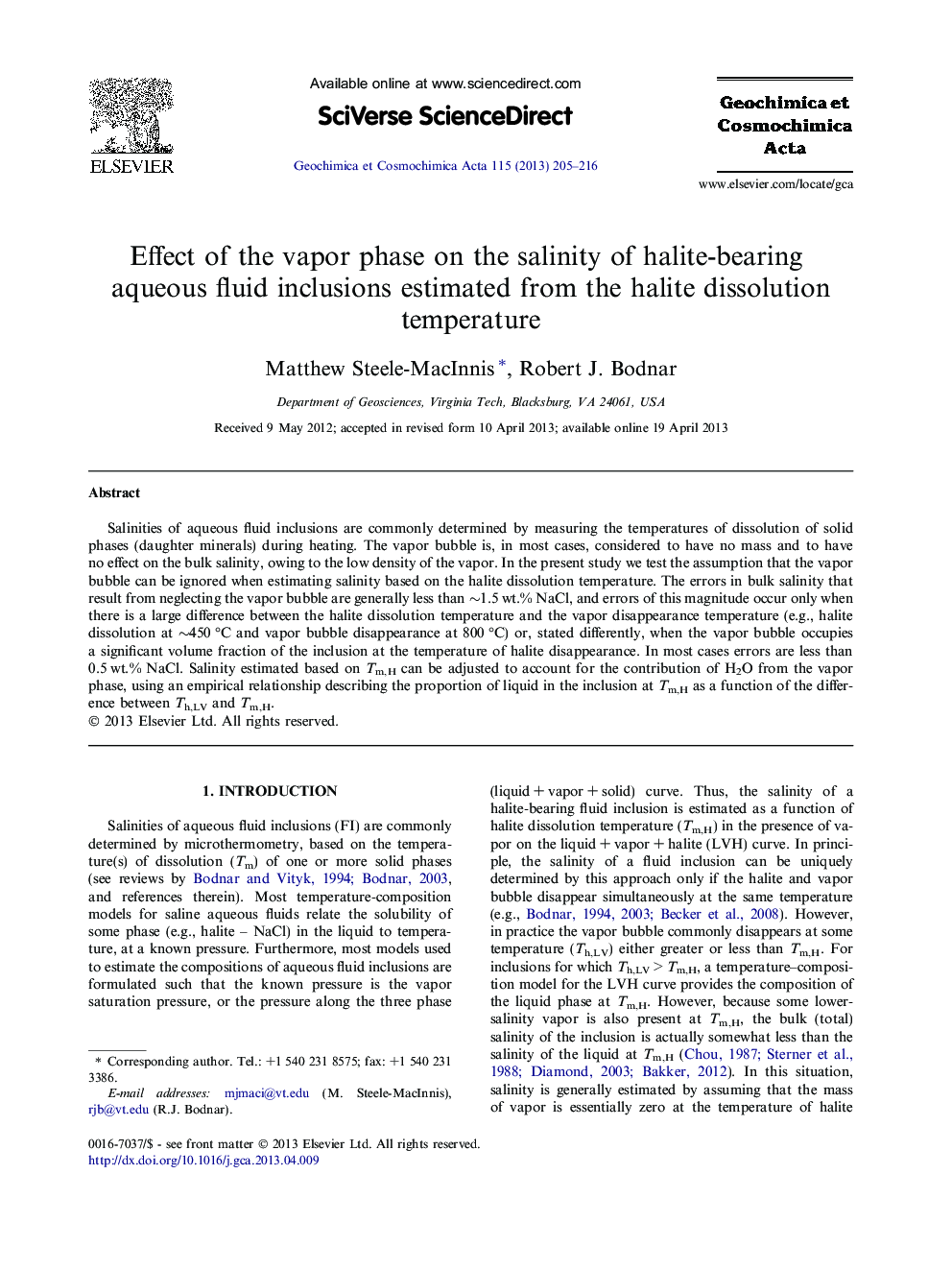| Article ID | Journal | Published Year | Pages | File Type |
|---|---|---|---|---|
| 4702351 | Geochimica et Cosmochimica Acta | 2013 | 12 Pages |
Salinities of aqueous fluid inclusions are commonly determined by measuring the temperatures of dissolution of solid phases (daughter minerals) during heating. The vapor bubble is, in most cases, considered to have no mass and to have no effect on the bulk salinity, owing to the low density of the vapor. In the present study we test the assumption that the vapor bubble can be ignored when estimating salinity based on the halite dissolution temperature. The errors in bulk salinity that result from neglecting the vapor bubble are generally less than ∼1.5 wt.% NaCl, and errors of this magnitude occur only when there is a large difference between the halite dissolution temperature and the vapor disappearance temperature (e.g., halite dissolution at ∼450 °C and vapor bubble disappearance at 800 °C) or, stated differently, when the vapor bubble occupies a significant volume fraction of the inclusion at the temperature of halite disappearance. In most cases errors are less than 0.5 wt.% NaCl. Salinity estimated based on Tm,H can be adjusted to account for the contribution of H2O from the vapor phase, using an empirical relationship describing the proportion of liquid in the inclusion at Tm,H as a function of the difference between Th,LV and Tm,H.
